Text
Well, idk if I'll delete this blog or not, but I'll definitely not post my art here, if any of you are interested in me, then follow my main blog @likestuff19 , I'll probably post some of my work there, or announce another set blog there, but I'll definitely forget about this blog.
5 notes
·
View notes
Text
Sorry for being inactive with my drawings, I just feel unmotivated to share them on social media, I think I might just stop here for a while.... Or maybe just one day make another blog but for now probably not much from me here...
0 notes
Text
SidLink is so beautiful I just want to cry cause they are just so perfect and I can't right now
#nate the dreamer talk stuff#nate the dreamer#sidlink#bless sidlink#sidon loz#prince sidon#link breath of the wild#link legend of zelda#link botw#botw sidon#legend of zelda#breath of the wild#beautiful#relationship goals#i wanna cry
17 notes
·
View notes
Text
That one fic that’s so out of character that it makes you hate your favorite character
35K notes
·
View notes
Photo
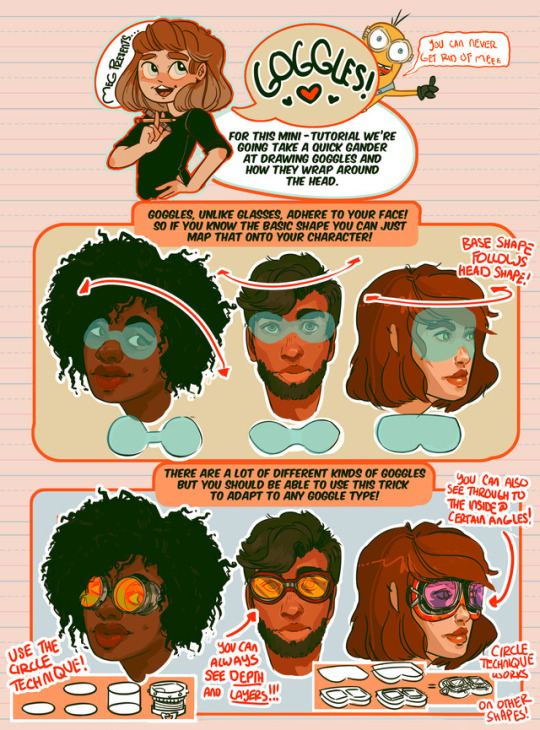
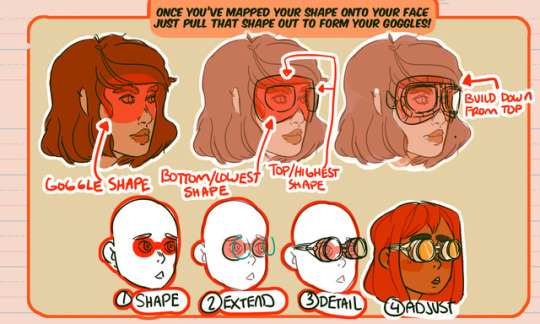
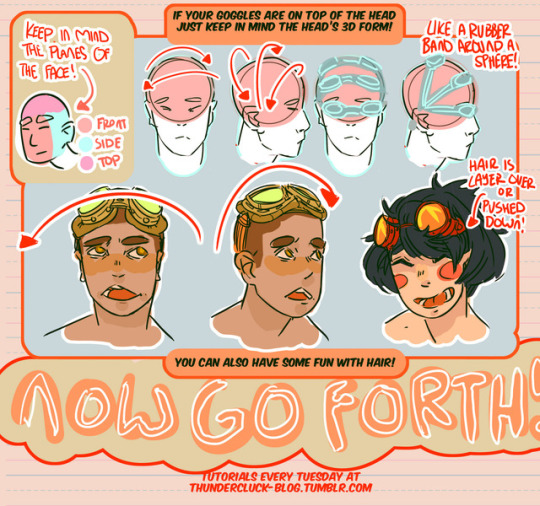
Hey friends, Meg here for TUTOR TUES-WEEK!
Here we observe how goggles work around the head! If you have any recommendations send ‘em in here or my personal! Keep practicing, have fun, and I’ll see you tomorrow!
17K notes
·
View notes
Photo
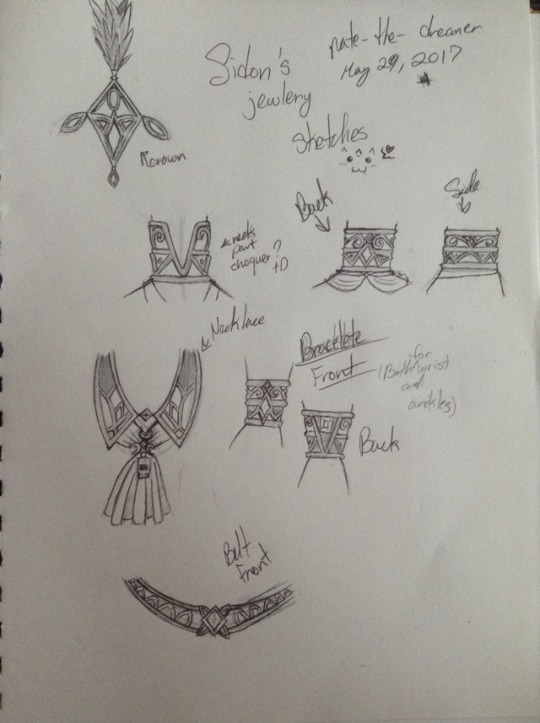
Sketches of some Prince Sidon's accessories May 29, 2017
#nate the dreamer#nate the dreamer art#sketches#my sketches#sidon#prince sidon#botw sidon#legend of zelda#loz botw#sidon loz#nintendo#nintendo switch#character study#gaming#video games#art post 13
8 notes
·
View notes
Photo
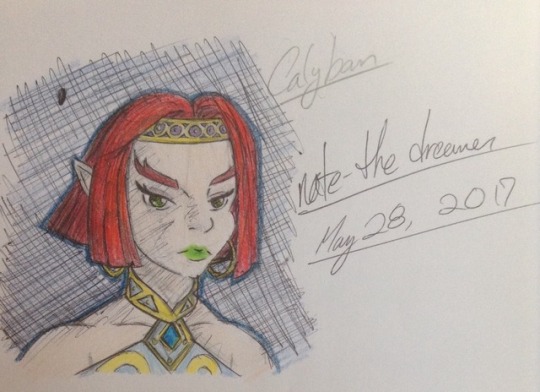
A sketchy drawing of Caliban, or the Hydromellon gerudo lady lol idk I like her, she just eat Hydromellons lol May 28, 2017
#nate the dreamer#nate the dreamer art#legend of zelda#loz botw#loz#gerudo#loz gerudo#breath of the wild#sketches#my sketchy art#nintendo#nintendo switch#gaming#breath of the wild gerudo#art post 12
0 notes
Text
I don't want a knight in shiny armor, I want a prince with red scales
#nate the dreamer#nate the dreamer talk stuff#sidon#prince sidon#botw sidon#legend of zelda#loz botw#breath of the wild#botw#fish bae#fish boy#fish daddy
7 notes
·
View notes
Photo
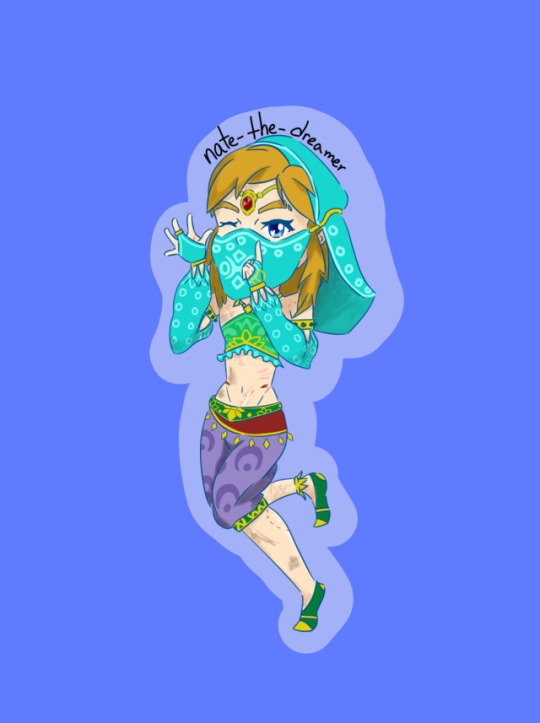
Finished my Link dressed as a vai ;D
And I couldn't forget about Sidon's bite marks~
May 27, 2017
#nate the dreamer#nate the dreamer art#my art#link breath of the wild#link legend of zelda#sidlink#cute#cute boys#cross dessing#gerudo outfit#digital art#nintendo#nintendo switch#breath of the wild#loz botw#art post 10 p.3#bite kink#bite marks#prince Sidon#botw sidon#link gerudo#gerudo link#Fanart
16 notes
·
View notes
Text
I have 180 hours of gameplay in BOTW and I’m pretty sure that 80 of those hours is just me looking for koroks, Sidon and Link’s house just for drawing reference, also link needs to visit his fish bae
#nate the dreamer#nate the dreamer talk stuff#sidlink#botw sidon#prince sidon#loz koroks#koroks#link legend of zelda#link breath of the wild#I just spent a lot of time in link's house drawing him in certain outfit and looking around his town on what to draw#and if I want to use this spot of hateno for some SidLink stuff#bless sidlink#nintendo#gaming#nintendo switch#wasting time#no regrets#lol#fish boy#fish bae
1 note
·
View note
Text
What is successful art?
This post was originally going to be titled “what is good art”. But that, of course, is a fairly un-answerable question. There are just too many factors at play, too many legitimate answers that can easily be dissected and taken down by equally legitimate rebuttals.
This is a post about how to succeed (and by succeed I mean actually make a living) in the field of art. Much of the process of getting there is determining what IS successful, and using that information to your benefit. This whole post is just from my point of view and I’d love to hear yours at the end.
We can look at art objectively. We can say, is there a good knowledge of anatomy? Of color and light? Composition? Edge control? Storytelling? Line weight? Perspective? Contrast? Etc, etc etc, every foundational skill that’s hammered at in art school.
And there’s definitely legitimacy to this approach! If there’s an obvious deficiency in any of these foundational skills, the art will suffer.
But art can be totally lacking in many of these areas and still succeed.
I usually call this the “appeal” factor. Appeal is extremely hard to define.
I’ll make an example out of a piece of abstract art. Sesame, Helen Frankenthaler
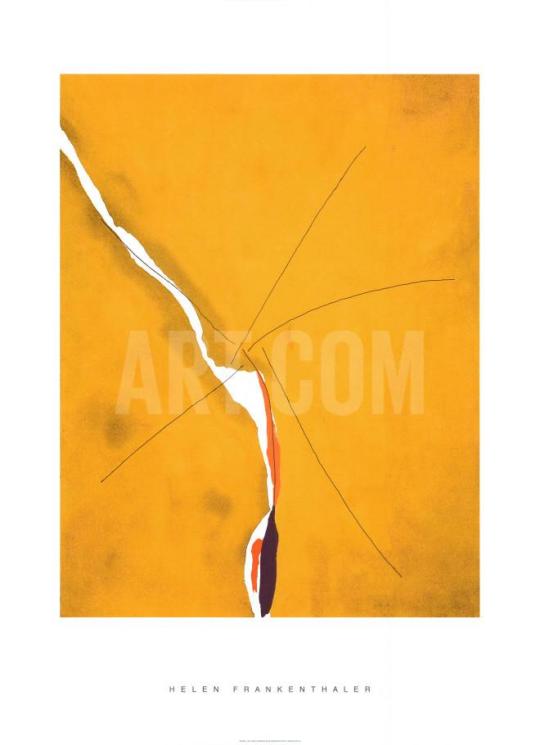
Is this good art?
Some simply will not like it. Others dislike it (or are neutral) but can explain the objective qualities of it (composition, color, texture, line shape and edge control, etc). But there are people who have no knowledge of any of these properties of art who still like it! Why? Because it appeals to them.
Different aspects of art will appeal to different people. My professors from time at art school are an excellent example. If I made a slideshow of every piece of art I’ve made in the last 5 years, I can almost guarantee that every teacher would pick a (most likely vastly) different favorite piece.
My character design teacher likes simplified art with an emphasis on shape language. (Below; my work from his class.)
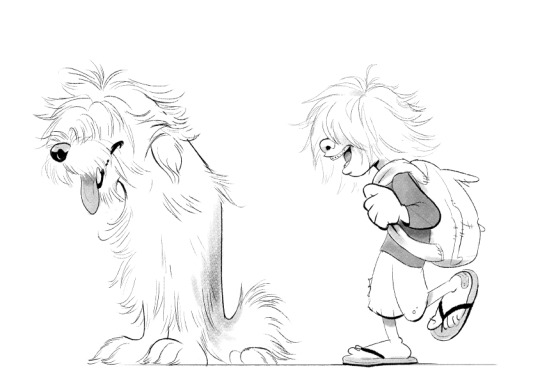
My oil painting teacher was not a fan of that style in the least! He’d pick a well-executed oil-painted orb over a cartoon any day. He appreciated abstract oil painted works with graphic, bold color choices. (Below; my work from his class.)

And I don’t think either of them would particularly like this…

…despite it being one of my most successful pieces! Surely they’d look at it objectively and give me a pat on the back for the execution, but if they were putting together a list of my works that appealed to each of them most, neither would likely choose it.
So what does this mean for us, as artists? If even other ARTISTS would have such radically varying opinions?
1) SUCCESSFUL ART LOOKS DIFFERENT IN DIFFERENT FIELDS
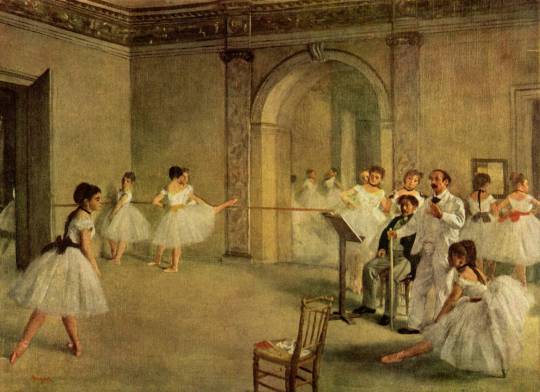
This is a gorgeous painting by Edgar Degas, and is certainly at home in a fine art gallery. It’s an incredibly successful piece by a fantastic artist. But if somehow (ignoring all logic) he turned it in as a portfolio piece for position as a character designer on, say, Gravity Falls…
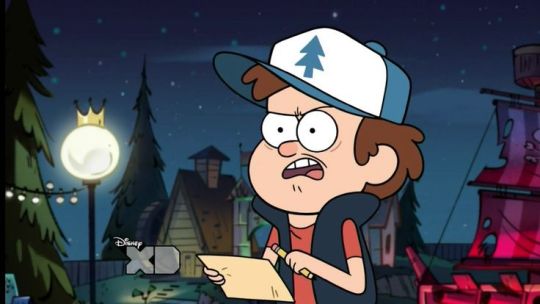
…he’d be met with some confusion! It’s an incredible painting, but for a TV cartoon it doesn’t display the practical skill-set needed for the job. The same logic applies that this model sheet by my talented character design teacher Joe Pitt…
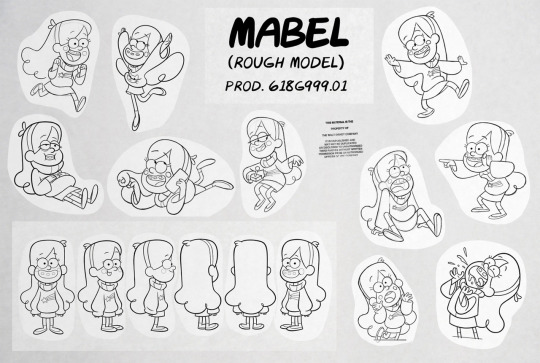
…would NOT be accepted into a fine art gallery! And certainly, fine art snobs may even turn their nose up at it! But for a TV cartoon character model sheet, it is extremely successful. To those who find this type of art appealing it’s a home run.
And you may not even consider how specific these categorizations get. The above model sheet is very appropriate for a TV cartoon, but likely wouldn’t be for, say, a computer animated feature film like Big Hero Six.
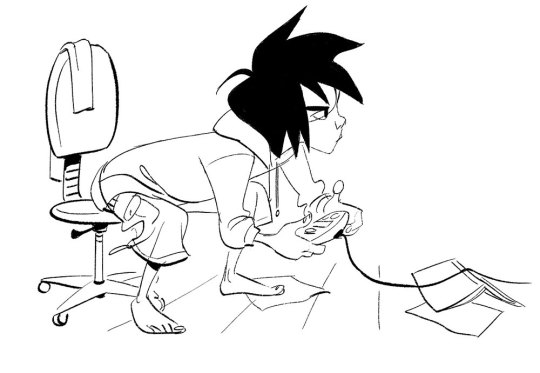
Shiyoon Kim’s incredible Hiro drawings knock it out of the park in the field of feature film character design, but again, wouldn’t be found in a fine art gallery. (And would need to be simplified immensely to work for most TV cartoons!)
What does this mean for you? It means KNOW YOUR AUDIENCE. Put together a portfolio that SUITS the job, and don’t expect a job to come along that suits your existing portfolio; it may, but then again, it may not. If you want to guarantee work, it often means designing your portfolio for success. RESEARCH what factors make something successful in your desired field.
If don’t want to do this, or don’t wish to work in-house in an existing position, or want to play the convention artist alley game or something similar…
2) TAKE ADVANTAGE OF THE APPEAL FACTOR- the trends are different depending on the situation!
People buy art that appeals to them. Also, people share art that appeals to them, and more shares = more buys in the long run.
I see so many posts along the lines of:
Popular artist: *makes something simple that looks like it took 10 min* 10,000 NOTES!!
Me: *spends 30 hours on a painting* 18 notes…….
And I understand the struggle. I really do; seriously. But we have to examine the factors at play here. And we have to rid ourselves of the idea that more detailed = better. Because often (not always), ESPECIALLY on tumblr, on twitter, on instagram, and at artist alleys at conventions, simple art with a high appeal factor is what succeeds.
For example; Omocat. Hugely successful artist online and at conventions, with very simple but extremely graphically and visually appealing art. Now has a clothing line!
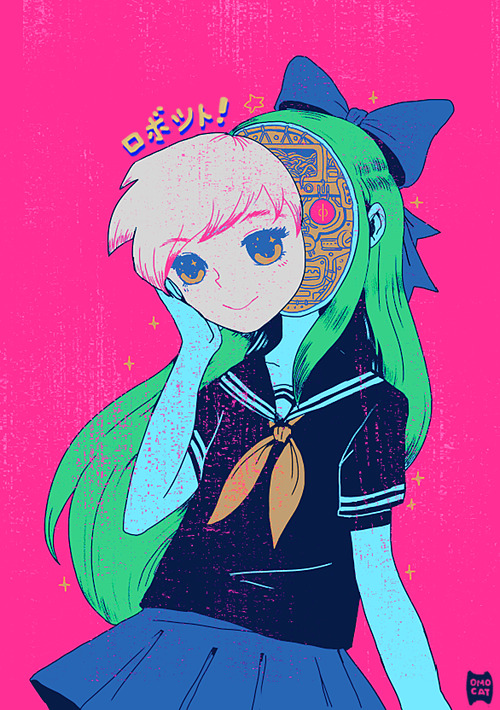
It’s simple, yes, but based on the hundreds of congoers constantly swarming omocat’s booth at every convention, it’s winning in the appeal factor. Omocat’s art is bright (neon even), colorful, psychedelic, cute and creepy at the same time, and simple enough to be graphic and recognizable from a distance.
Side note; all simple/graphic art is not created equal. Simplifying is an art on its own. Creating something that’s simple and still extremely appealing is HARD. There’s a reason that this old (shoddy) attempt at “chibi anime” style art by me…

Fails compared to this awesome, adorable piece by Kiwibon:
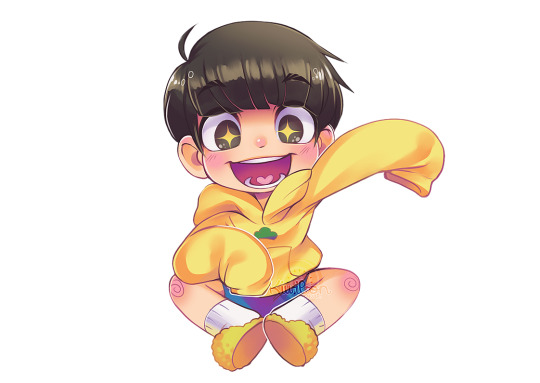
I don’t want you to get the idea that appeal is confined to cutesy, colorful, cartoon/anime art, because it isn’t. Appeal is NEVER confined to a single category, and I GUARANTEE that many of the people who read this won’t agree that some of my examples are appealing; but that’s just the nature of such a slippery concept. It can’t be pinned down. All we have are overall trends.
Take J! http://commissionsbyj.tumblr.com
Graphic, surreal, highly appealing, and extremely successful.
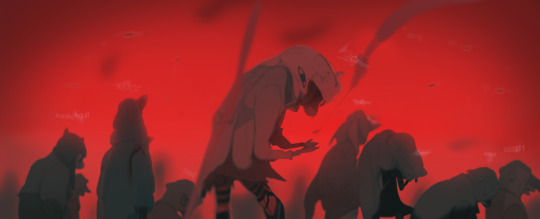
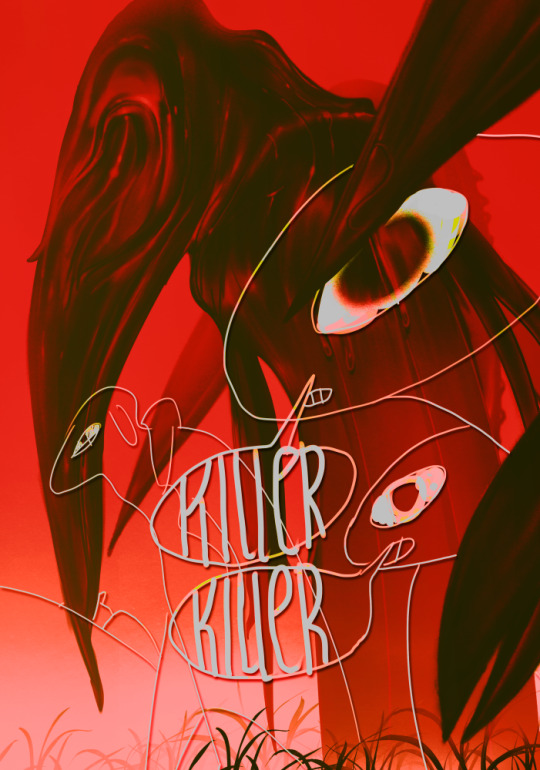
Both artworks above by J.
I’ll elaborate on the detailed =/= better concept with this example, a piece that took me under 2 hours:
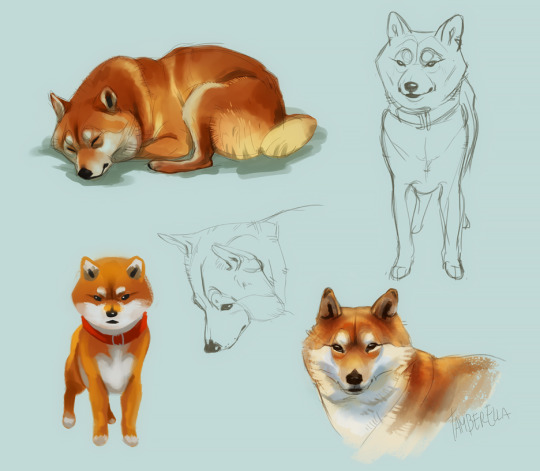
…has nearly ten times the notes of this piece, which took me close to 20 hours.
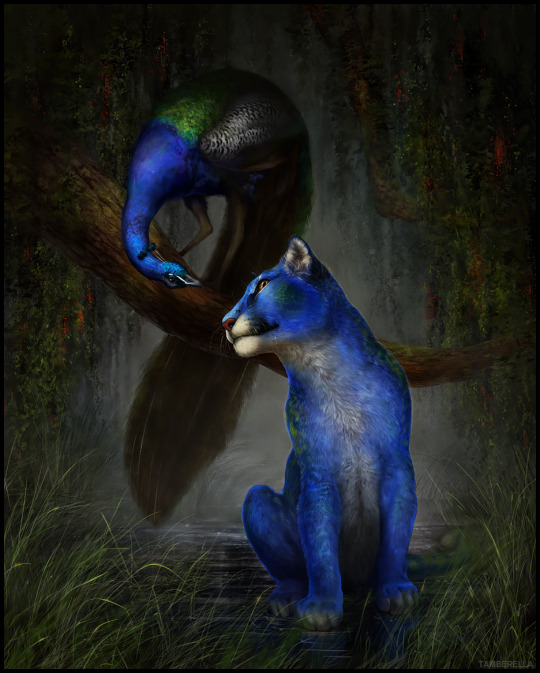
The second piece KILLS the first one in terms of time, effort, detail, and artistic principles. But clearly, based on popularity, the first is KILLING in the appeal category! The first piece is bright, colorful, simple, graphic, cute, and is of subject matter that’s popular (shiba inu/doge) and therefore is highly shareable.
But don’t get me wrong; yes, detailed =/= better.
But simple = better is not accurate either!
This third piece blows BOTH of those pieces out of the water in terms of popularity!

And if you ask me why, I can guess, but I can’t define it exactly! That’s why the appeal factor is SO HARD to describe! It is SO SUBJECTIVE! But trends don’t lie, and this piece of mine above is one of my most popular paintings to date. What’s appealing? Is it the bright colors, and the graphic nature combined with the high level of detail?
After all, there are many artists with highly detailed art that still maintain a top notch level of appeal! Like Rudy Siswanto:

All we can really do is…
3) FIND SUCCESSFUL ARTISTS DOING THE KIND OF ART YOU WANT TO DO, AND CHART TRENDS!
In every field, at every level of detail, from anime conventions to sci-fi conventions to fine art galleries to graphic novels to concept art, there are immensely popular artists who are KILLIN IT at what they do. Figure out why.
Determine everything they’re doing from personality to upload schedule to platforms to art style. Are they making fanart that’s succeeding in a particular fandom? Are they offering a highly desired product like Sakimichan’s Patreon setup (which is currently making $25,000 per session)?
If you want to succeed at this internet art game–and work for yourself instead of a company–this is your homework! It’s what I’ve been attempting to work on for months. And I think I’m getting somewhere. Please let me know your thoughts. And of course, EVERYTHING I’ve said in this post is entirely my opinion and you can disagree with anything you wish to!
Please do keep the dialogue going if you have anything to say. I’m very interested to hear.
5K notes
·
View notes
Photo
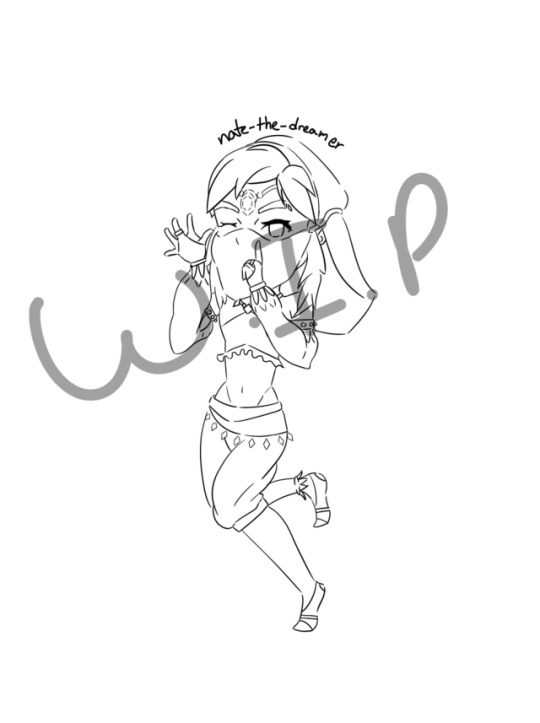
A fixed version of my desert vai Link! :3
May 25, 2017
#nate the dreamer#nate the dreamer art#loz botw#link breath of the wild#fanart#digital art#art wip#art post 10 p.2#legend of zelda#link legend of zelda#gerudo outfit
1 note
·
View note
Photo
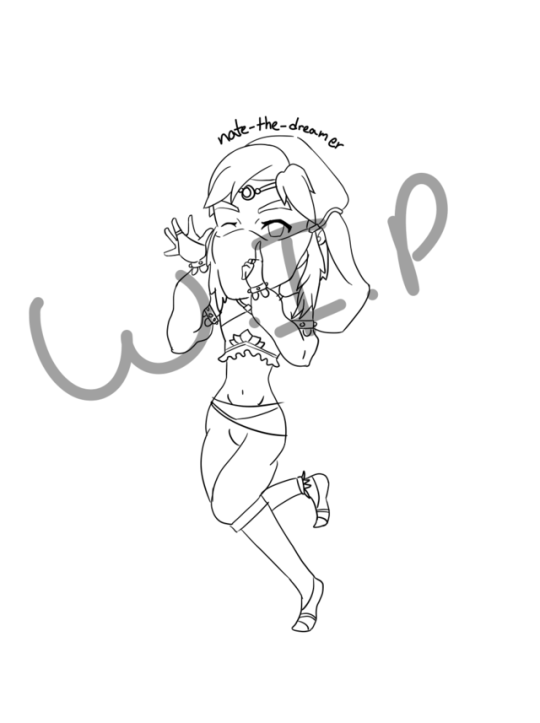
A W.I.P of Desert Vai Link :D
May 25, 2017
#nate the dreamer#nate the dreamer art#link breath of the wild#art wip#fanart#digital art#art post 10#loz botw#breath of the wild#chibi#my art#cute#cute boys#cute outfit#nintendo switch#nintendo#gaming#wip
0 notes
Text
daily life of a digital artist:
is that a not coloured spot or a stain on my monitor
I didn’t save for at least 2 hours god is real
my playlist ended 1,5 h ago I’ve been drawing in silence this whole time
‘ “asdf11.png” already exists. Do you want to overwrite? ‘
I resized this very part of a picture but now it looks too small so let’s ctrl+z ohMYGOD IT’S SO B I G
this idea seemed cooler yesterday at 3 am
I want to pee but right now I’m doing so well and if I go I will leavE THE ZONE
opacity 67% or 68% I can’t decide
well this pic looks nice //*flips it horizontally*// I regret having eyes
where the fuck is my pen
328K notes
·
View notes
Text
I hate this hellsite.
So, I am VERY angry right now because of this: http://tumblr.jaltoid.com/post/160926541643/how-about-we-dont-hurt-real-people-over-fictional
Apparently, some lunatic tried to MURDER an artist at a con because they drew ship art of Frisk and Sans…Frisk has no set age in the game and the drawing is not sexual in nature. And these people tried to kill her by giving her a cookie with a needle baked in it. I just…can’t right now. WHY?! THE HELL WHY!?! She didn’t do anything wrong and these nut jobs tried to kill her. Look, I hate loli/shotacon and I’m as against pedophilia as you could be and this is disgusting.
I hate these morons. I hate these disgusting excuses of human beings who think art is more important than the lives of real people. It’s gross and wrong and I’ve been seeing it all over this site recently. I’ve seen it with the Voltron fandom. I’ve seen it with the Samurai Jack fandom and now this one. I hate this and this makes me so upset. Why do these people have to do this? I’m sorry guys if this is too dark for this blog but please try to send support to the artist if you can.
41 notes
·
View notes
Text
Commissioning and Copyrights Followup
I wanted to write a followup to yesterday’s post, addressing some questions and critiques people have had.
Isn’t a commission a Work For Hire?
Only if it is stated as such. In order for a commission to be considered “Work For Hire” the artist needs to agree to it ahead of time in writing. Many commercial freelance contracts do contain “Work For Hire” clauses, but commissioned artwork is not Work For Hire by default. You can read more about this topic here: http://www.americanbar.org/publications/tyl/topics/intellectual-property/copyrights_and_works_made_hire.html
I commissioned an artist to draw my character. It’s my character so doesn’t that mean I automatically own the art?
You still own the character, but not the rights to the art by default. When you commission an artist, you are giving them permission to draw your character in that specific context. This doesn’t grant the artist full usage rights to your character, that character still belongs to you, and I believe the artist can’t turn around and sell prints of that art without your permission, because that is outside the original scope of what you’ve “licensed” them to do with the character (someone please correct me if I’m wrong here). But at the same time, even though it depicts their character, the commissioner can’t redistribute or edit the art without the artist’s permission. Basically, both of your copyrights are protected here.
If I buy a shirt or a CD, it belongs to me and I can sell it if I want. It’s the same if I commission art, right?
Ownership of physical commodities is not the same as usage rights of intellectual property. If you buy a painting or one specific print, yes, you can sell that specific physical print or painting to someone else. (Note: There are some additional rules about the transfer and sale of physical art that sometimes apply here).
If you buy a CD, or a shirt, however, you’re not buying the rights to the songs on the CD or the rights to the shirt design. You can’t make copies of the CD and put them up (for free or for sale) on the internet for other people to download. That would be copyright infringement. This applies to art you have commissioned as well. Visual artists retain usage rights of their art unless otherwise negotiated just like music artists do. They retain the right to decide how and where the art is distributed.
I think the confusion arises because commissioners assume that what they are paying for when commissioning an artist is the art itself. Technically, what you are paying for is the service. Unless the artist gives you a piece of physical property, all you are paying for is the creation of the art, not the art itself. And even if they do include a piece of physical property (such as a print or actual painting), you own that painting, but again, not the copyrights to that painting.
This gets even more confusing with digital files. Most people don’t realize that copying art electronically is still copying and posting it on websites is redistribution.
Well that’s not fair. You mean I paid for this commission and I can’t even post it on my Twitter? Do you really feel that commissioners shouldn’t be allowed to share the art they commission?
My previous post was intended as an explanation of the legal facts of art copyright, not as statement of what I personally feel commissioners/artists should or should not do.
In my experience, most artists tend to be fairly flexible about actually enforcing redistribution rights of personal character commissions. Many of them don’t mind if the commissioner posts the art online, edits it to use as an avatar, etc. But unless they have already transferred rights, they do still retain the legal right to object if they want to, and some artists aren’t okay with some (or all) forms of distribution. So the safest practice is to talk to the artist you want to commission and ask what exactly you are allowed to do with the art.
I believe (again, I am not a legal expert, so someone please correct me if I am wrong here), a conversation with an artist in writing (such as an email exchange) in which the artist says you can post the art to your twitter, for example, counts as obtaining legal permission, even there’s not an official signed contract involved. So all you have to do is ask the artist you’re commissioning what your usage rights are and they can grant them to you right there in their email reply! Obviously signed contracts are harder to argue with and easier to enforce, so I wouldn’t recommend relying on casual email exchange for a big job. Make sure you have a clear, signed contract for stuff like that.
Again, these laws don’t exist to make things frustrating or unfair for commissioners, but to protect artists’ rights. Imagine, if you commissioned an artist for a piece of art, and the artist assumed this was just a personal commission you were going to hang on your wall, so they charged you accordingly. But then you turn around and use the art as a logo for a major brand and start successfully mass-producing merchandise with it. You are now potentially making a ton of money off of the artist’s work; significantly more than you originally paid them for it. That is the sort of scenario these laws are designed to protect against. Because of current copyright law, you would be unable to do this, and the artist would be able to sue you for damages, since had they known you actually wanted art for commercial use, they likely would have charged much more or asked for royalties on the product.
If, however, the artist relinquished all usage rights to you in writing, you are in the clear. If they signed a contract, knowing that by signing it, you can do whatever you want with the art, and they later see you making much more off of it than they did, that’s on the artist, not on you.
Artists, if you want an easy way to grant commissioners some restricted rights to the art you have created for them, I recommend looking into Creative Commons! This is a great way to licence your work for personal use, while still requiring things such as attribution, and restricting commercial uses of the work.
*Disclaimer: Again, I am not a legal expert. This is just based on my personal experiences working as an artist and my own readings on copyright law. Please consult a lawyer if you need professional legal advice.
354 notes
·
View notes
Text
Commissioning and Copyrights
There’s a post that’s been floating around Tumblr and Twitter that has (understandably) upset a lot of artists:
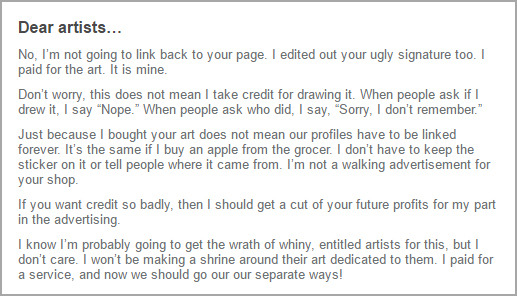
The original post seems to have been deleted and it was posted anonymously, so I have no idea who this person is or what inspired them to write this vitriol, but it’s prompted some conversations on Twitter and Tumblr that I wanted to address.
Rude attitude towards artists aside, this is a serious misunderstanding of how commissioning and copyright works. Judging by some of the replies to this post, this seems to be a common misunderstanding: Commissioners do NOT automatically get all rights to the art that they’ve commissioned.
Artists automatically own the rights to any work they have created as soon as the work is created, without needing to file any kind of legal paperwork, unless part of the commission agreement states that the client/commissioner is granted rights. Many commissioners (and artists!) do not realize this. They assume whomever is paying for the creation of the work owns the copyright to the work. It is not the payment that transfers this ownership. The payment is simply for the creation of the work. Not for the rights to the work itself, unless explicitly stated and agreed upon. (It’s worth noting, I work in the US, I am not sure how copyright law differs in other countries so my statements here are framed in the context of US copyright law).
Those of you who do professional work-for-hire freelance work (or work full-time for a studio) probably noticed in most of the contracts you signed there are clauses stating the client/company owns the work you’ve created (either in part or in full). This is because without that clause, you, as the artist, would actually still own the rights to the work and the company would be unable to use the work they paid you to create.
This is one of the reasons it’s important to have a contract signed by both the artist and the client whenever you’re doing a job. I know that many people (and I have been guilty of this too) tend to be more casual about one-off commissions and don’t always have a contract involved in those sorts of transactions, but honestly, with attitudes like this out there, it’s probably a good idea. A contract should clearly lay out what the usage rights are once the work is completed and can avoid misunderstandings or legal grey area down the line. For something small like a commission, it also just gives you something easy to point to if you need to ask a former client to stop using a work they commissioned in a way that was not originally outlined in the contract.
Generally, because of the informal nature of personal (non-commercial) commissions such as one-off character commissions, pet portraits, etc, artists may be more casual about how the commissioned art is used, but it’s still important to check with the artist what specifically you are allowed to do with the art, as each artist may have different preferences. Some may be happy to grant full usage rights, others may allow redistribution rights (with or without credit) but not allow the work to be resold or edited.
What this person above is doing, by editing out the artist’s signature, is technically illegal unless they have agreed-upon rights that allow them to edit the artist’s work (removing a signature is editing) and re-post it without credit.
These laws exist not to make commissioners miserable or to try to snag free advertising or whatever else this commissioner seems to think. These laws exist to protect artists’ rights which are increasingly vulnerable due to the nature of image-sharing on the internet.
Commissioners and artists, know your rights and make sure you understand them before money exchanges hands.
There’s a super helpful article here that goes into some of this in more detail that you may find useful: http://www.hongkiat.com/blog/design-contract-clauses/
Edit: Here’s another helpful article detailing what exactly “Work For Hire” is and how/when it grants rights to the commissioner/employer: http://www.americanbar.org/publications/tyl/topics/intellectual-property/copyrights_and_works_made_hire.html
The key points in this are that a written agreement is necessary for the work to be considered “work for hire” and for copyrights to be granted to the commissioner/employer.
*Disclaimer: I am not a lawyer and this post should not be considered professional legal advice, but merely useful information based on my personal experience working as an artist. If you have legal questions about a contract or the rights to your work or work you have commissioned, you should contact an attorney.
5K notes
·
View notes